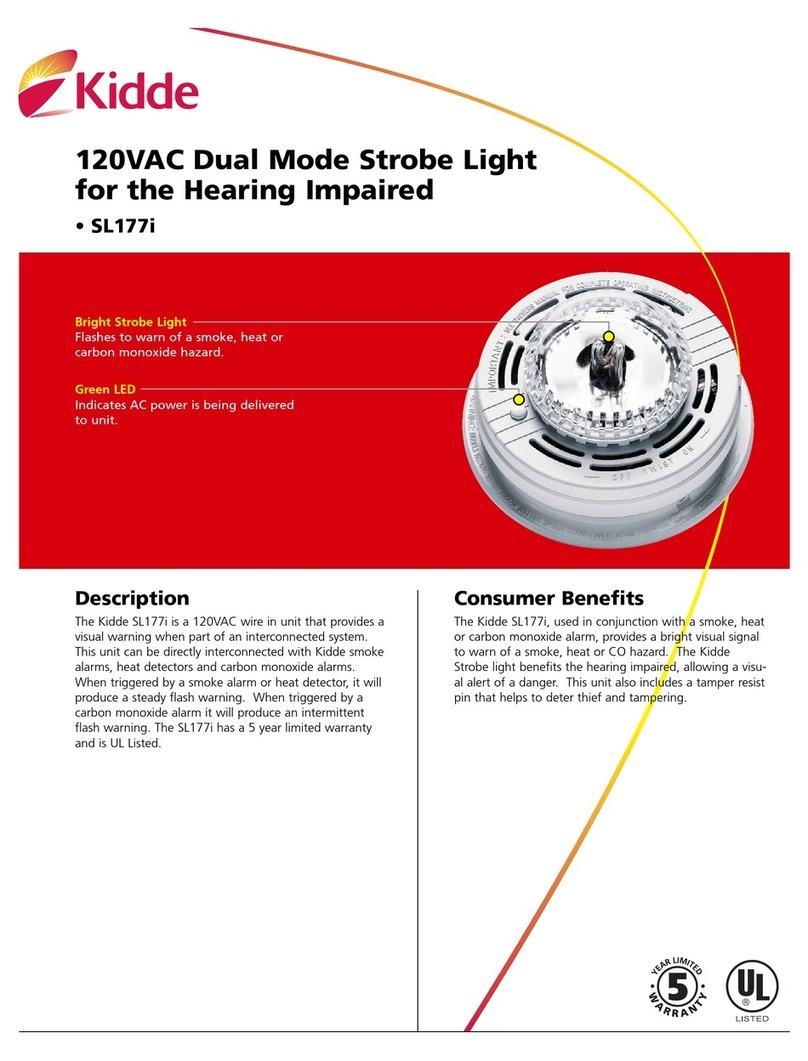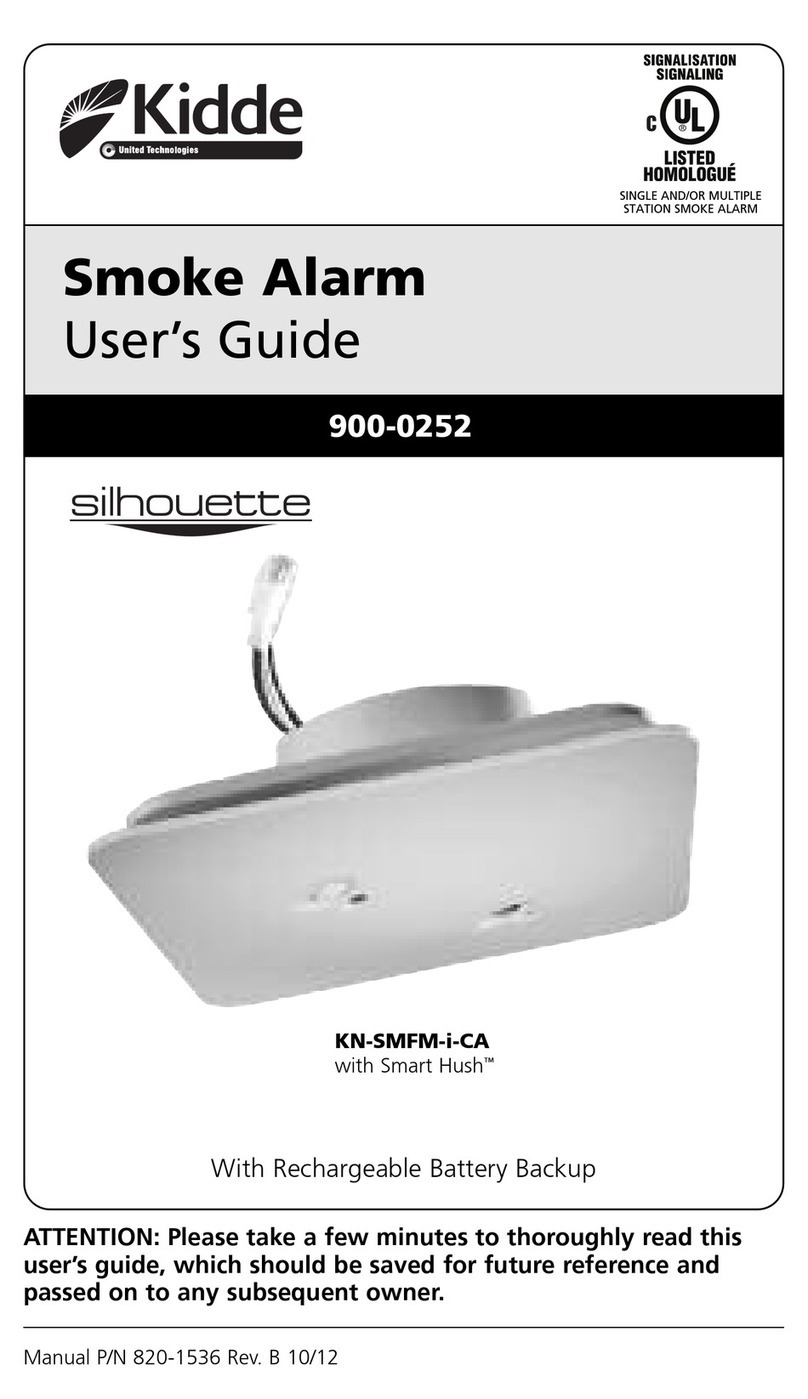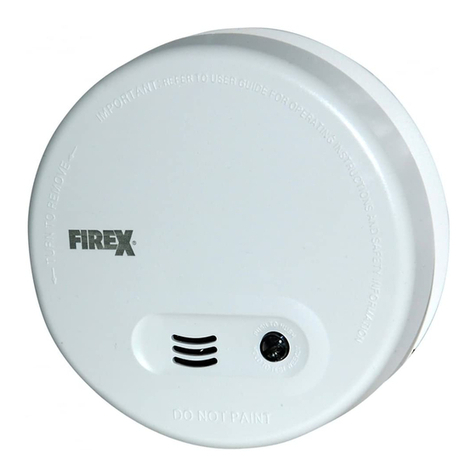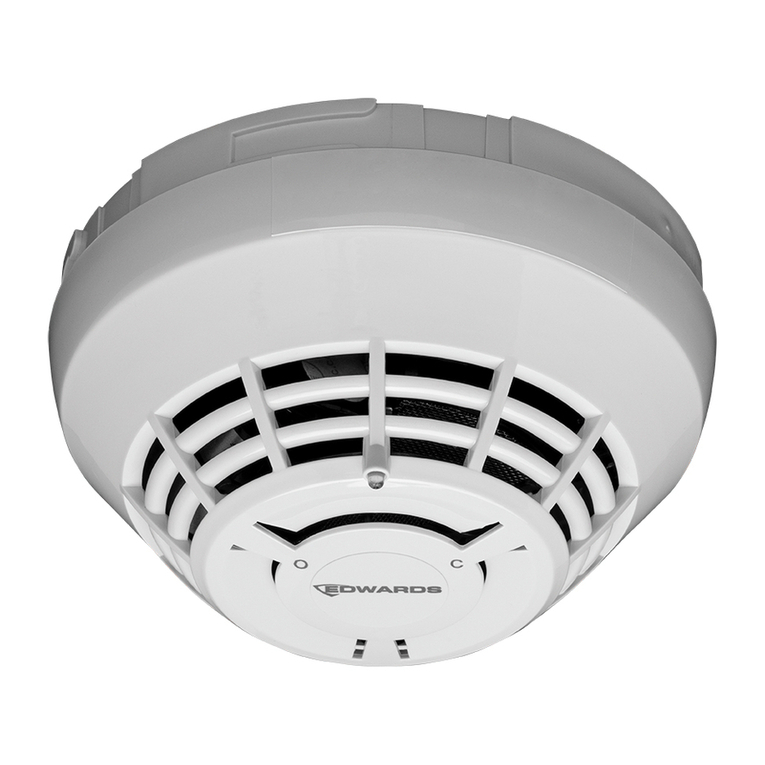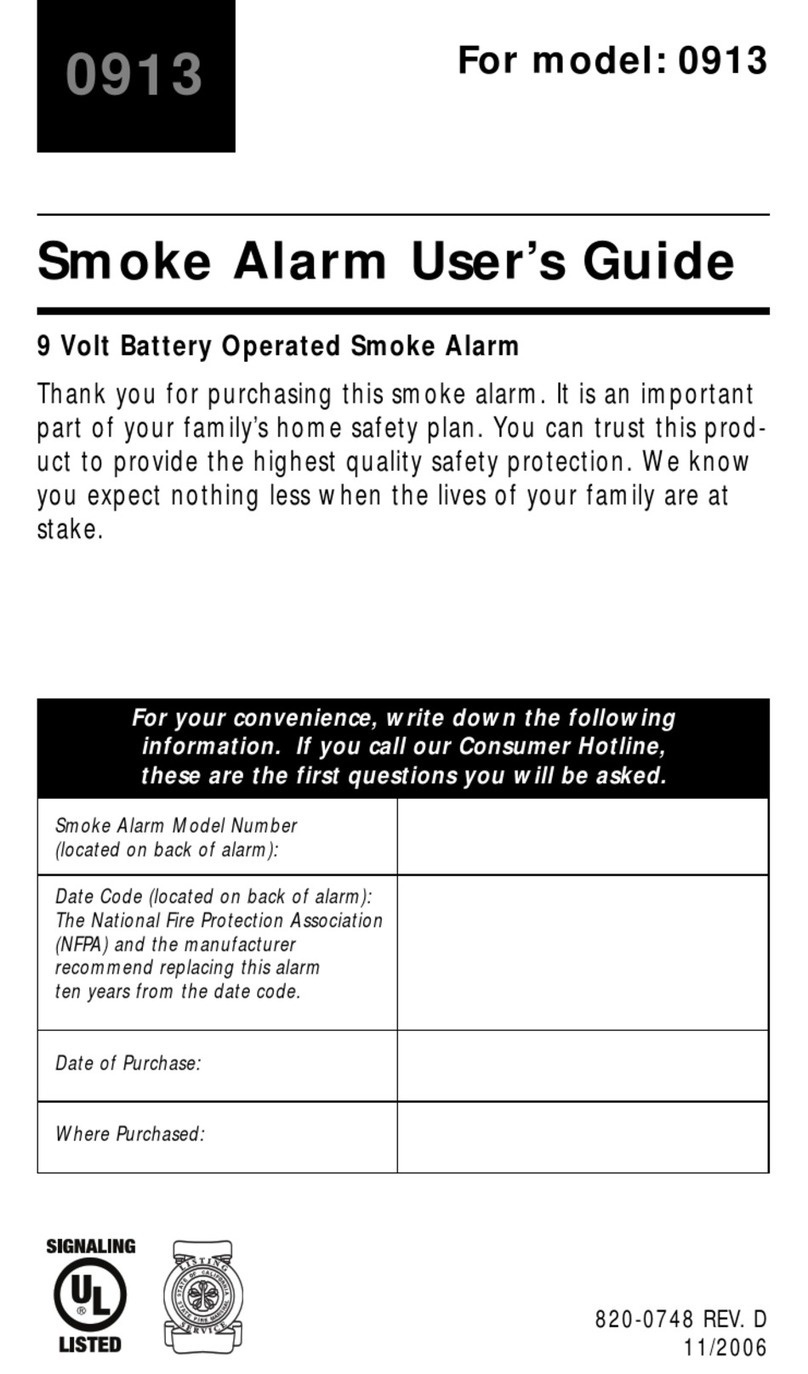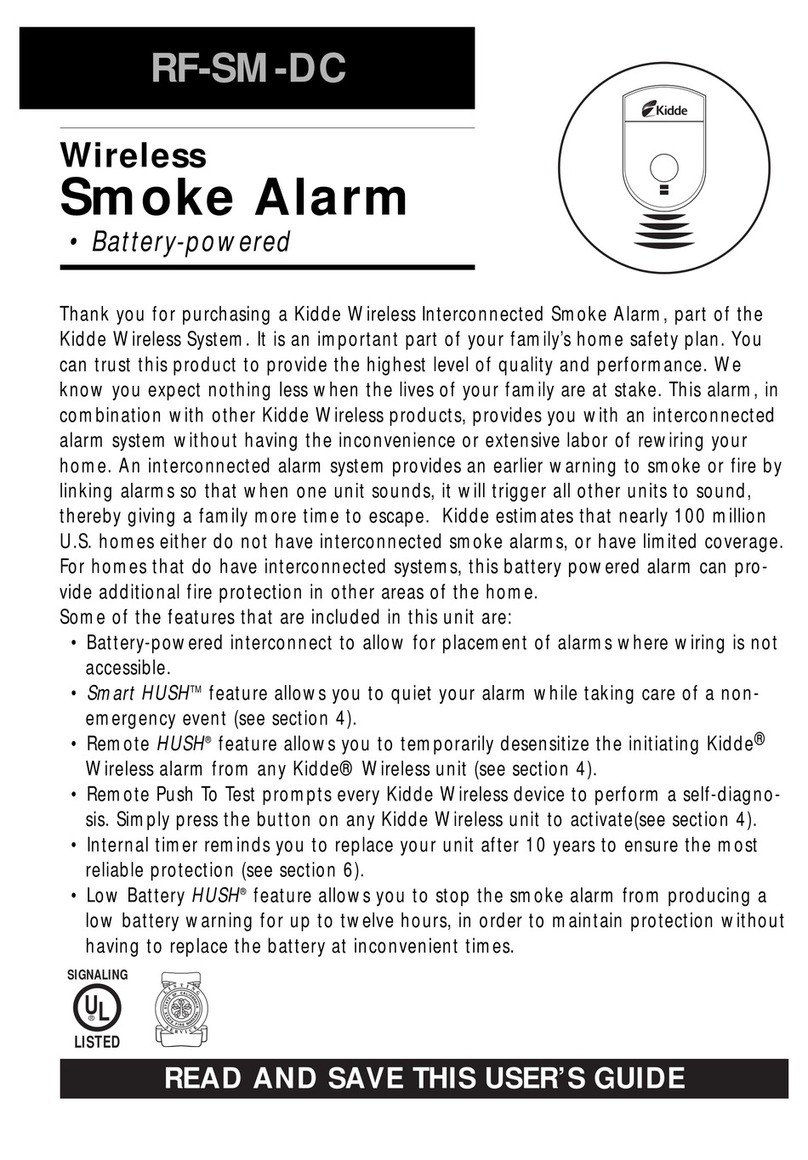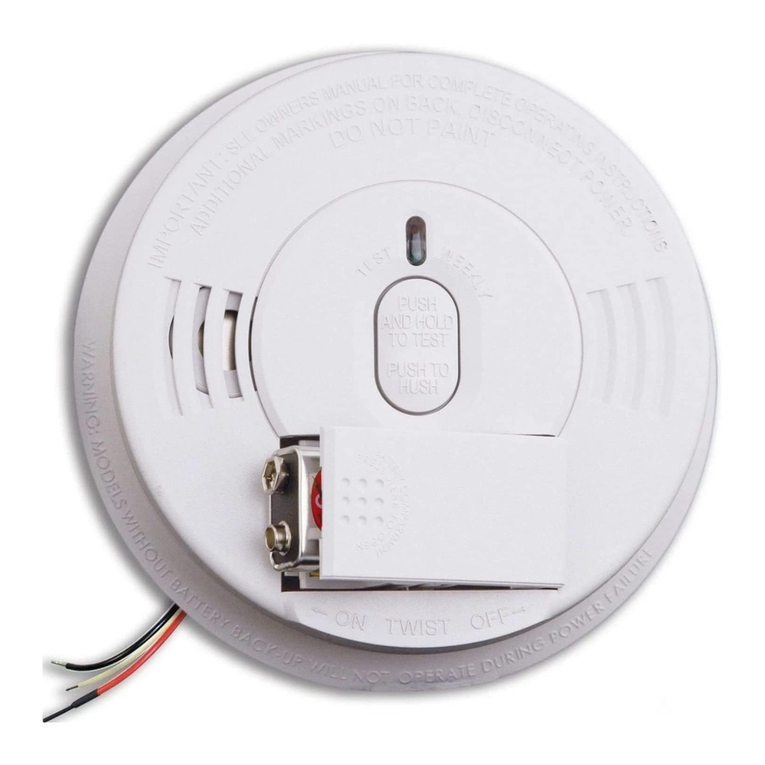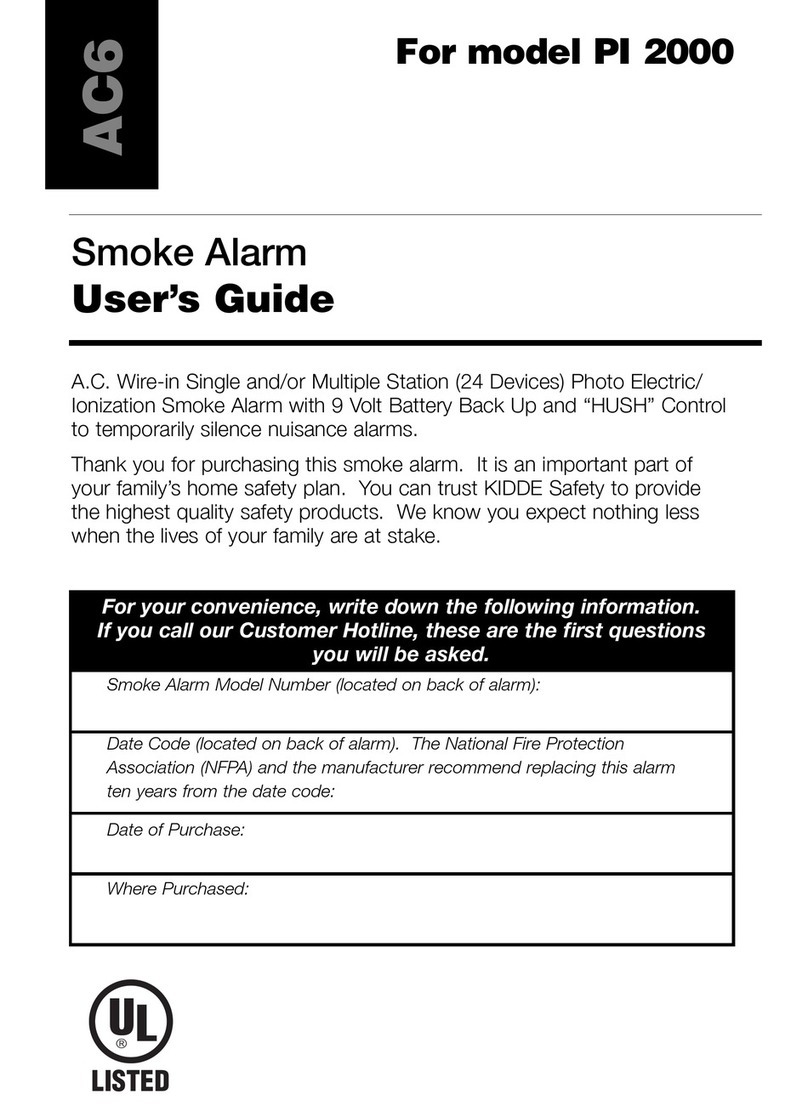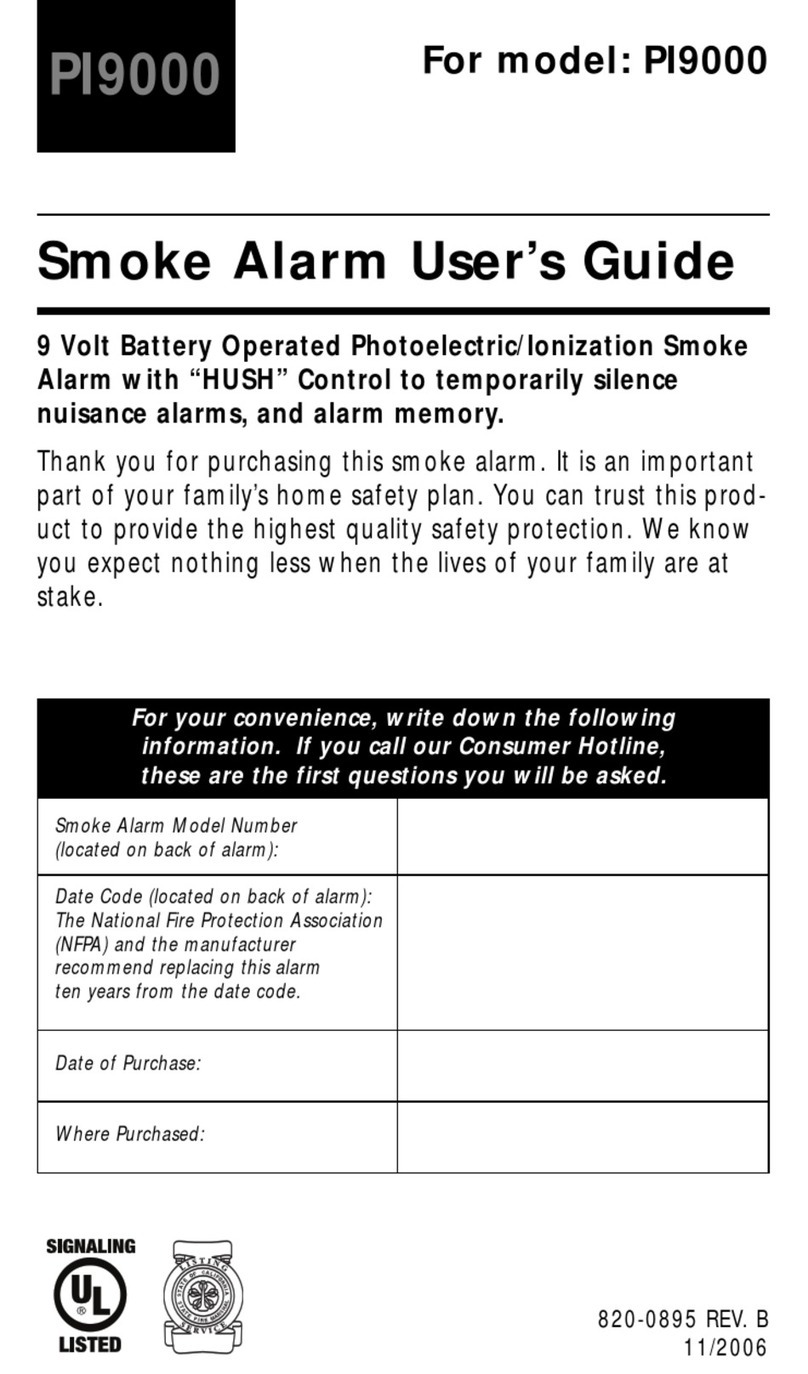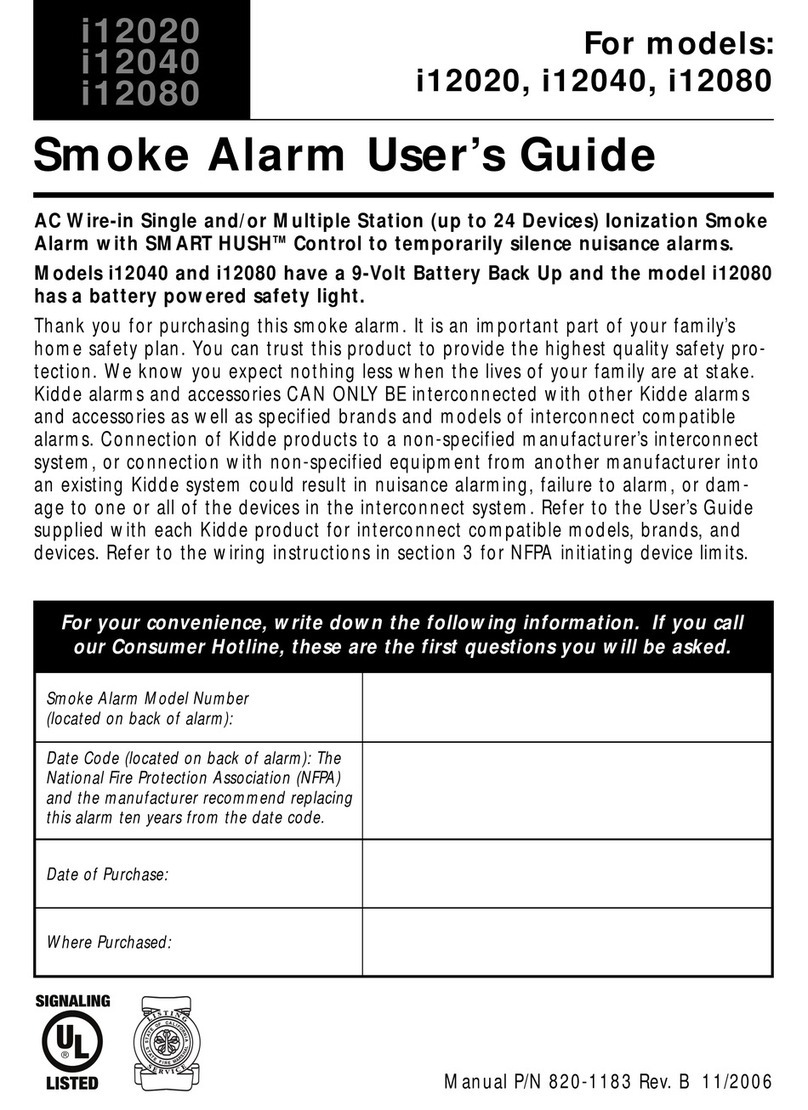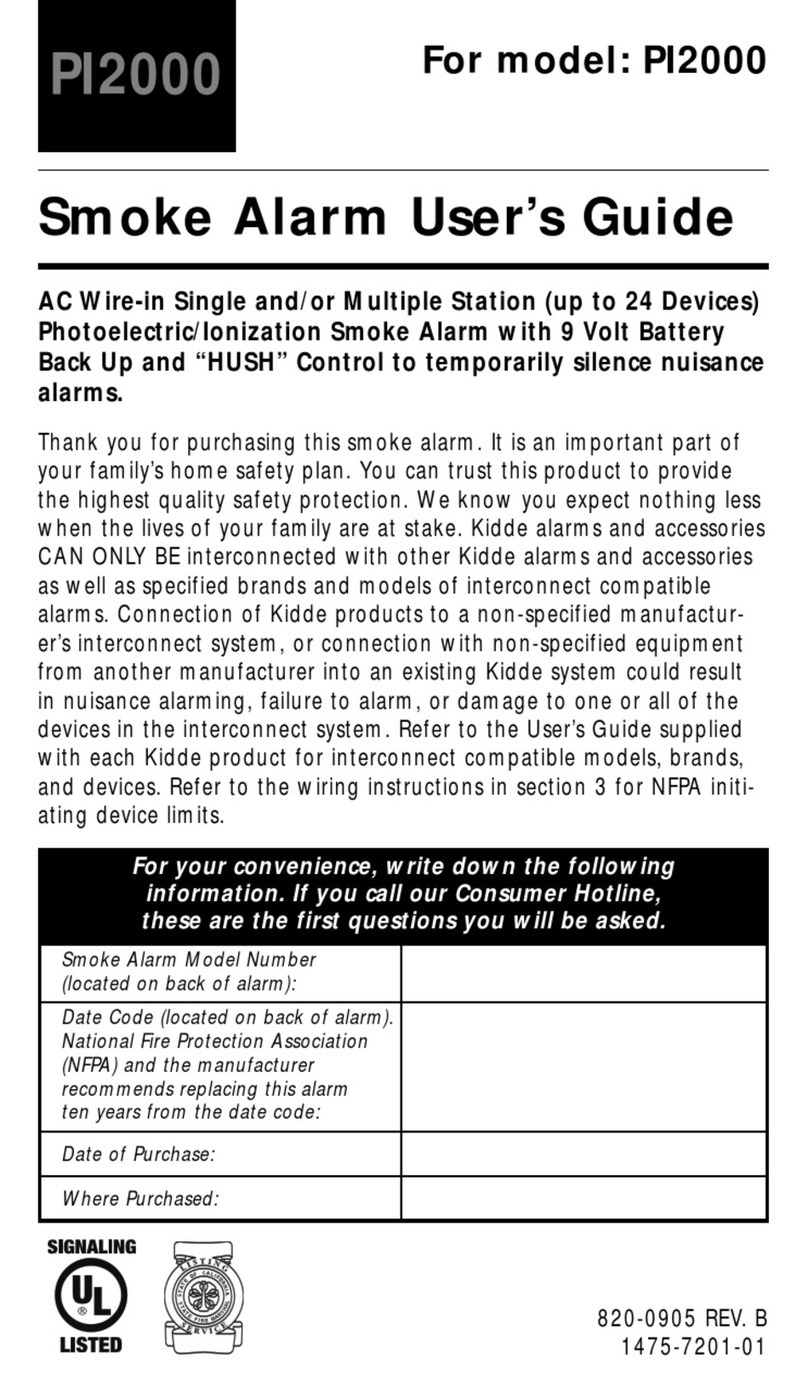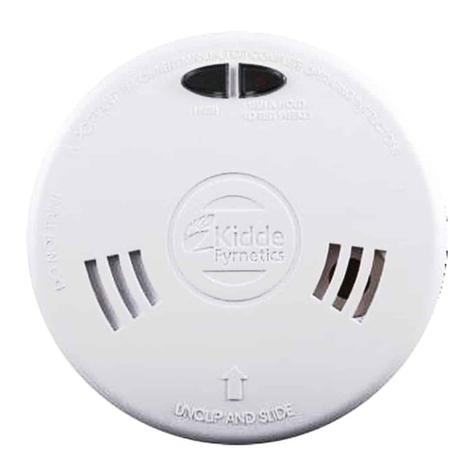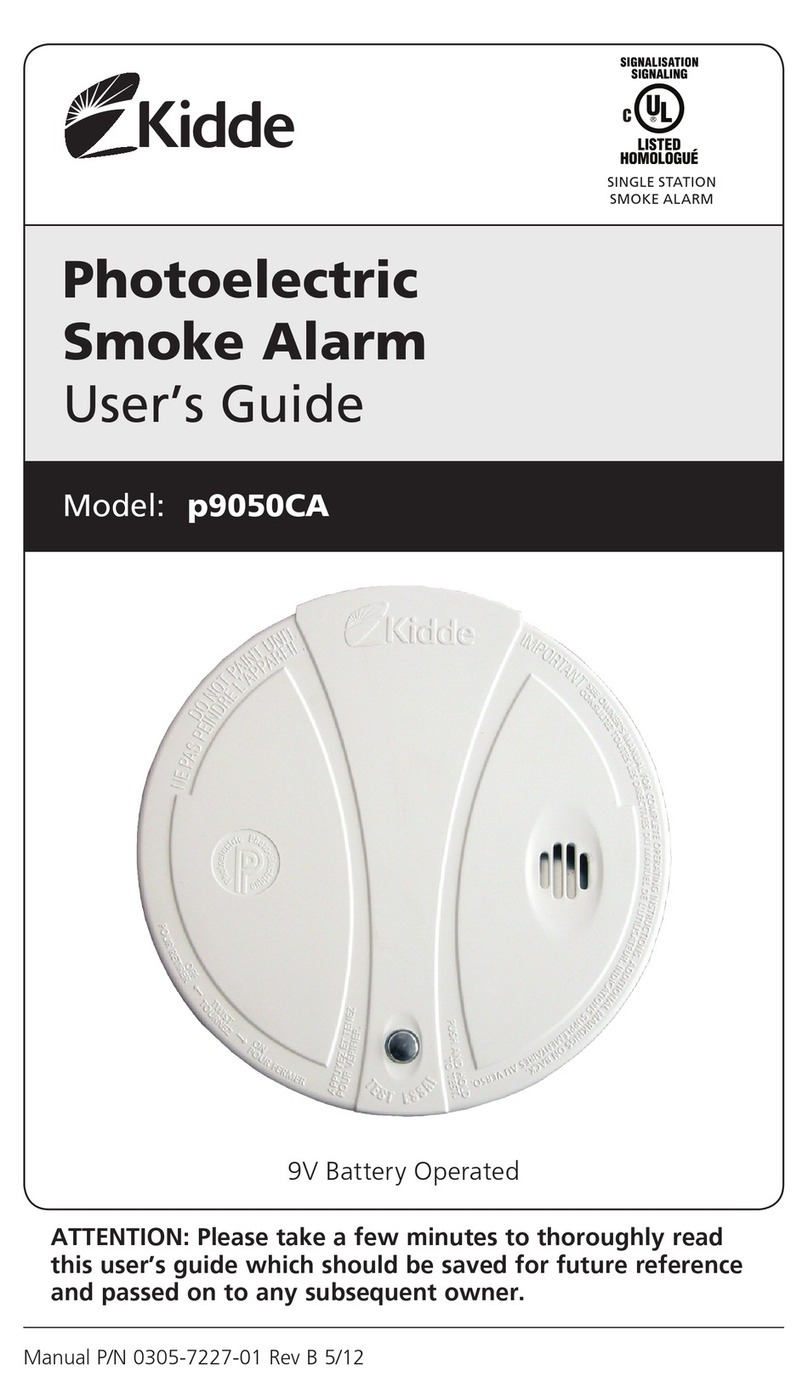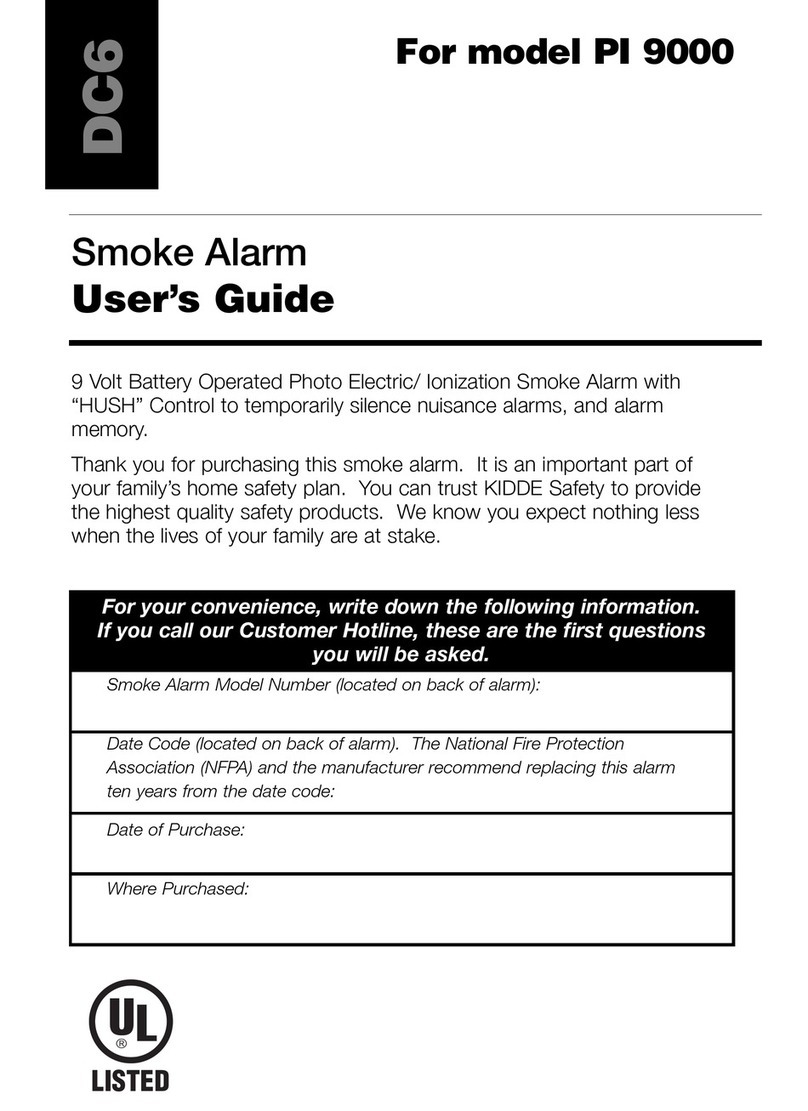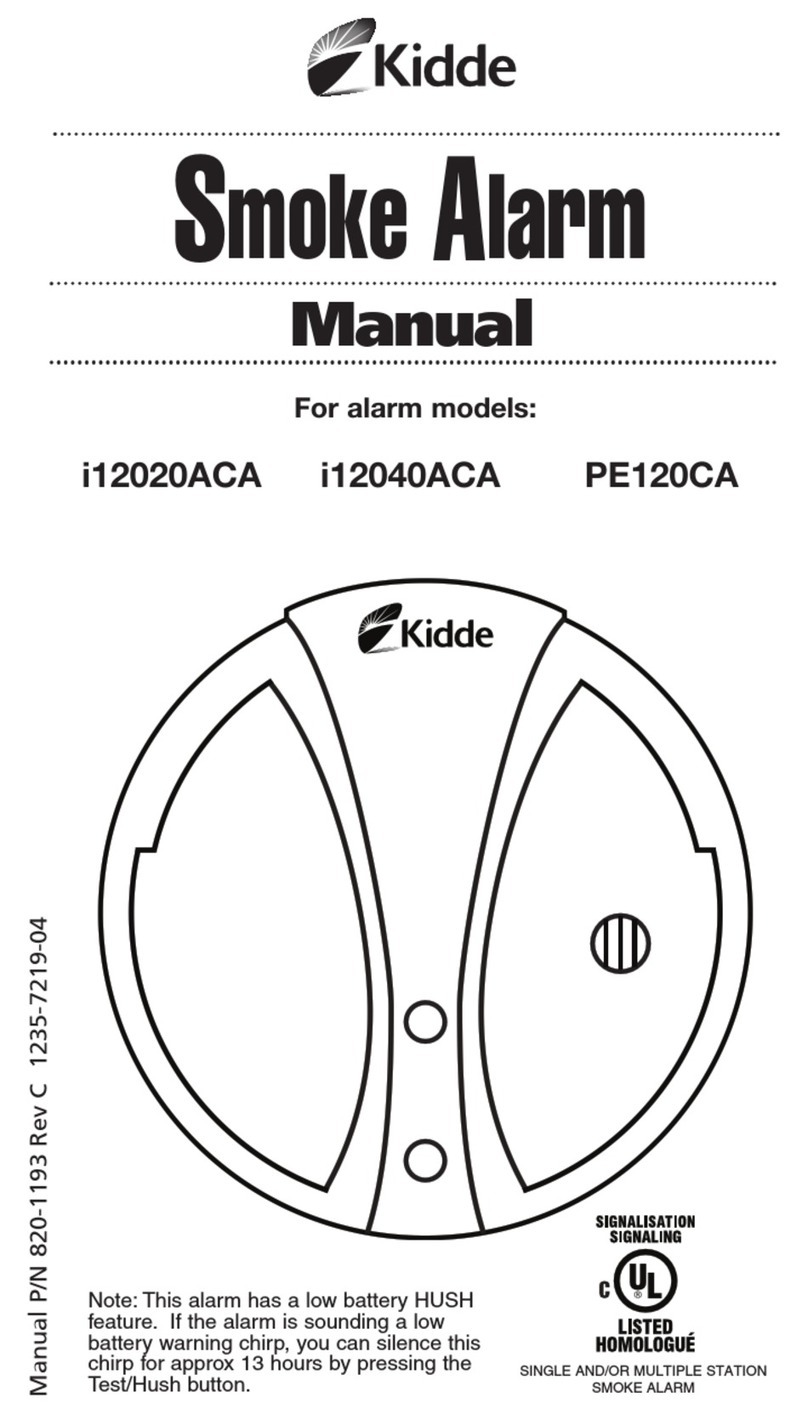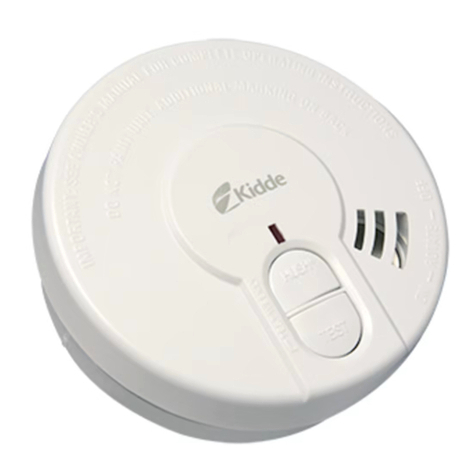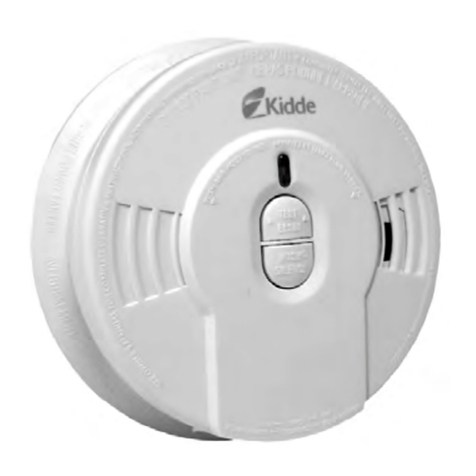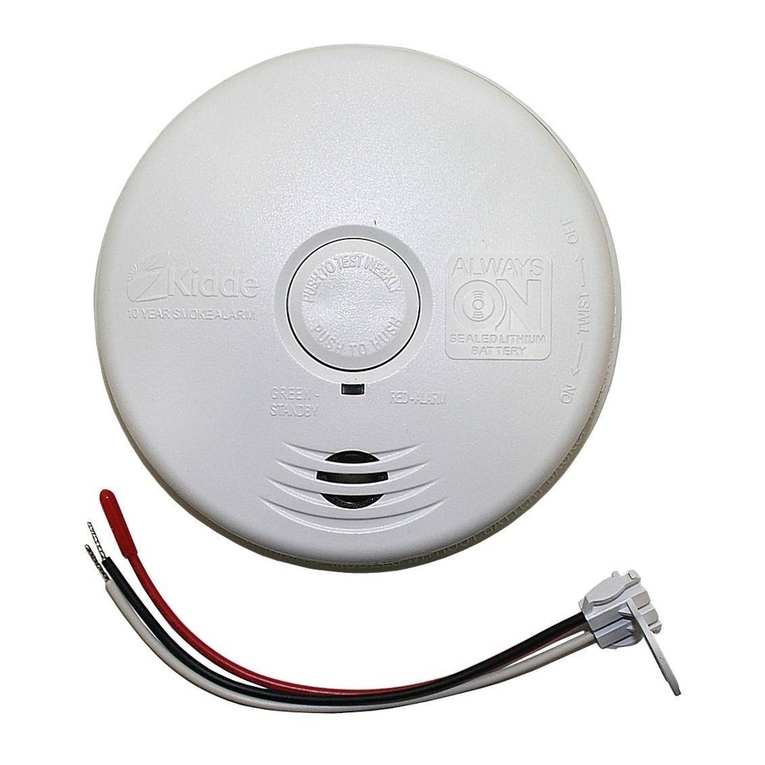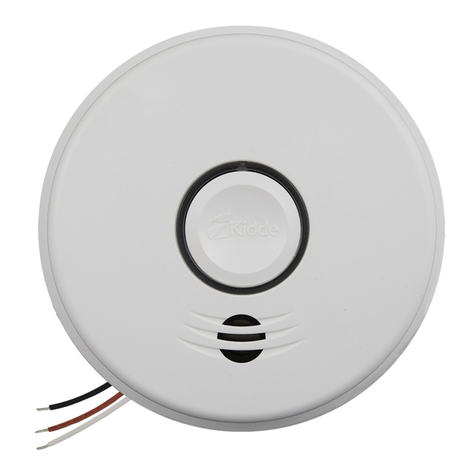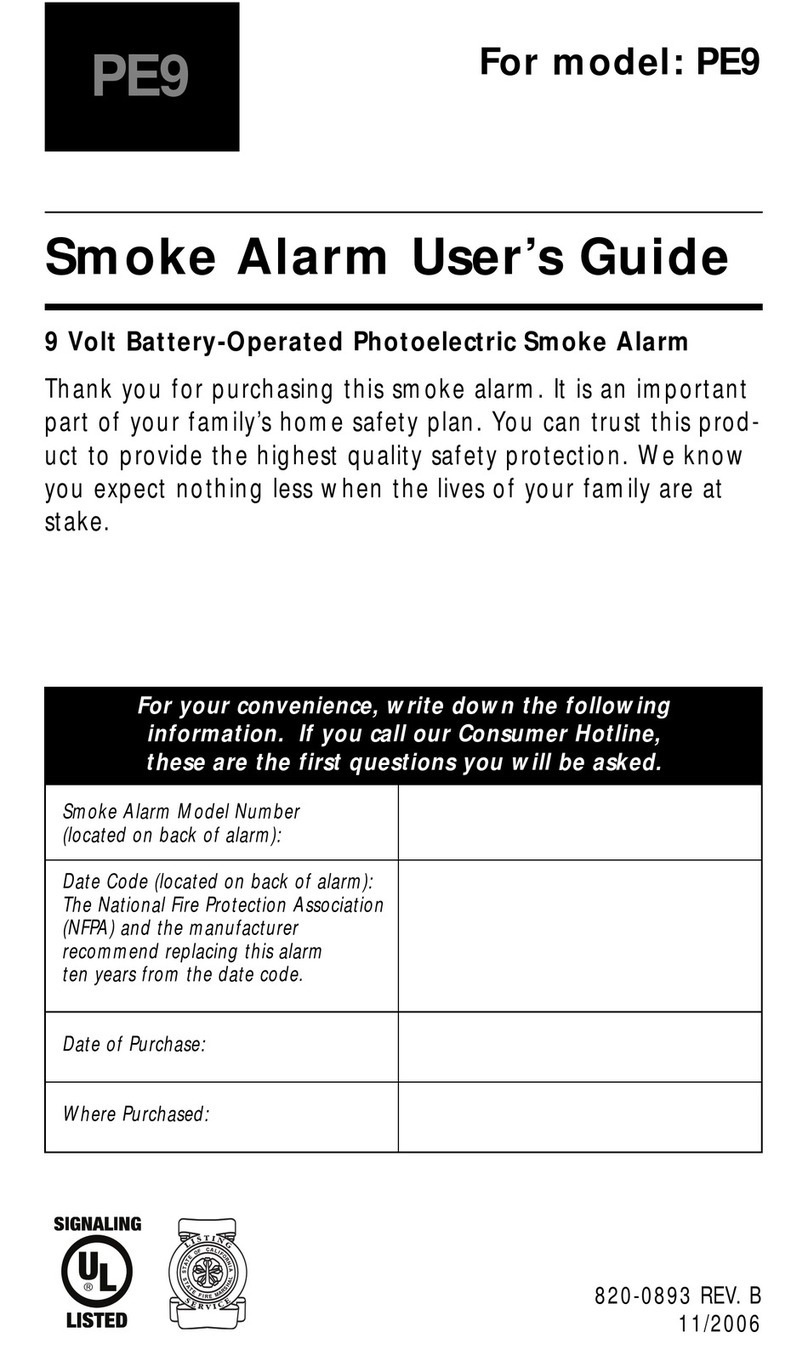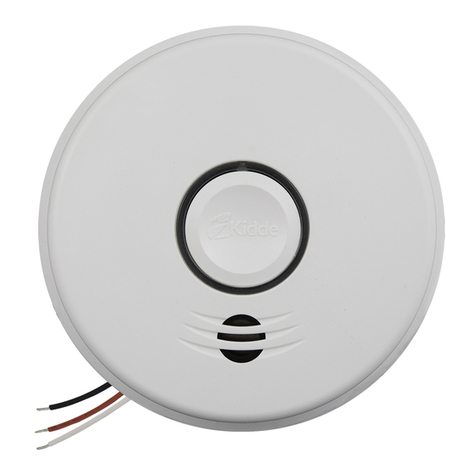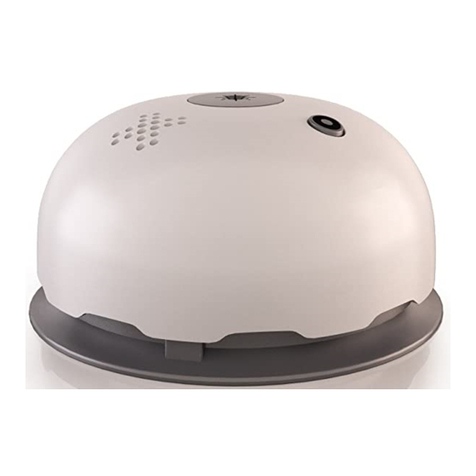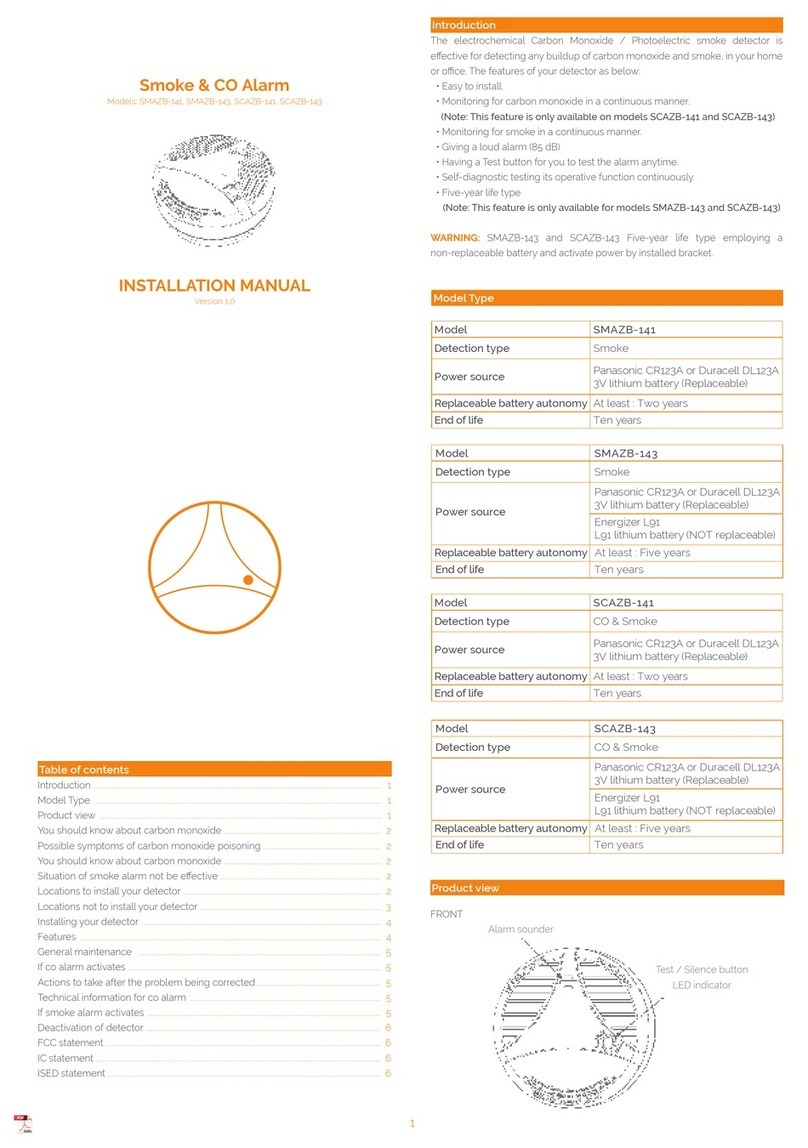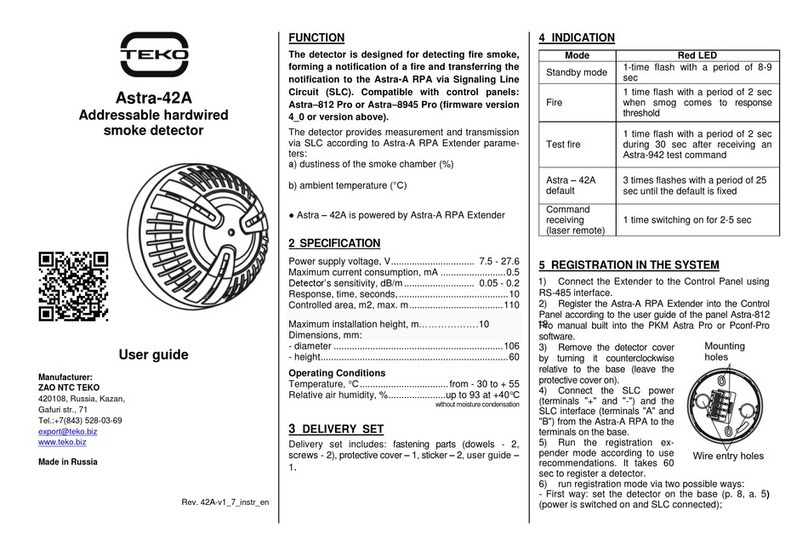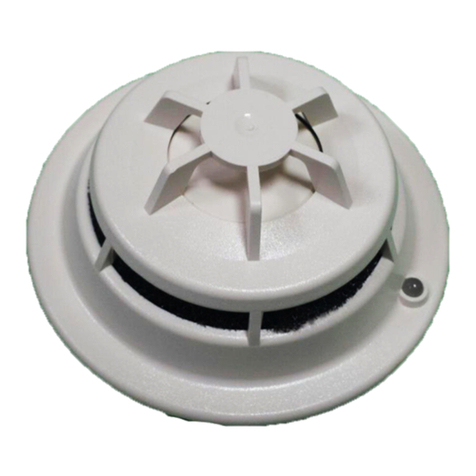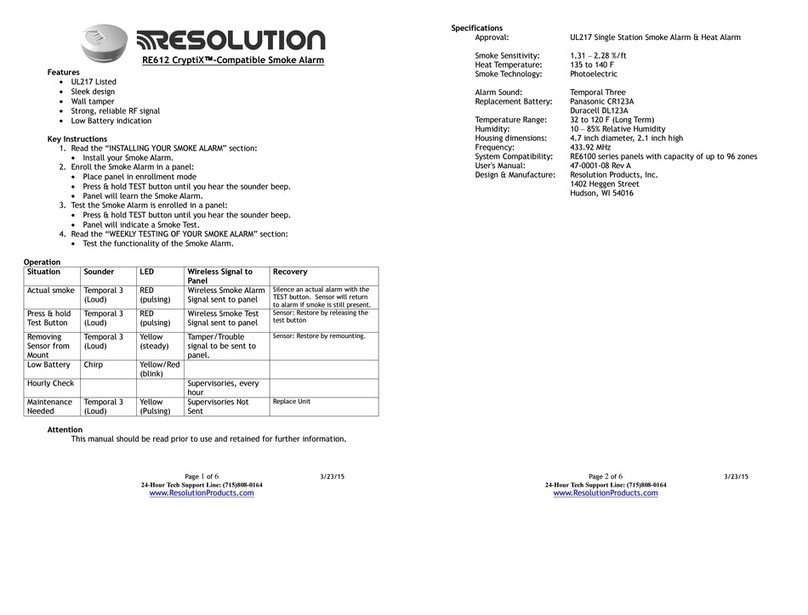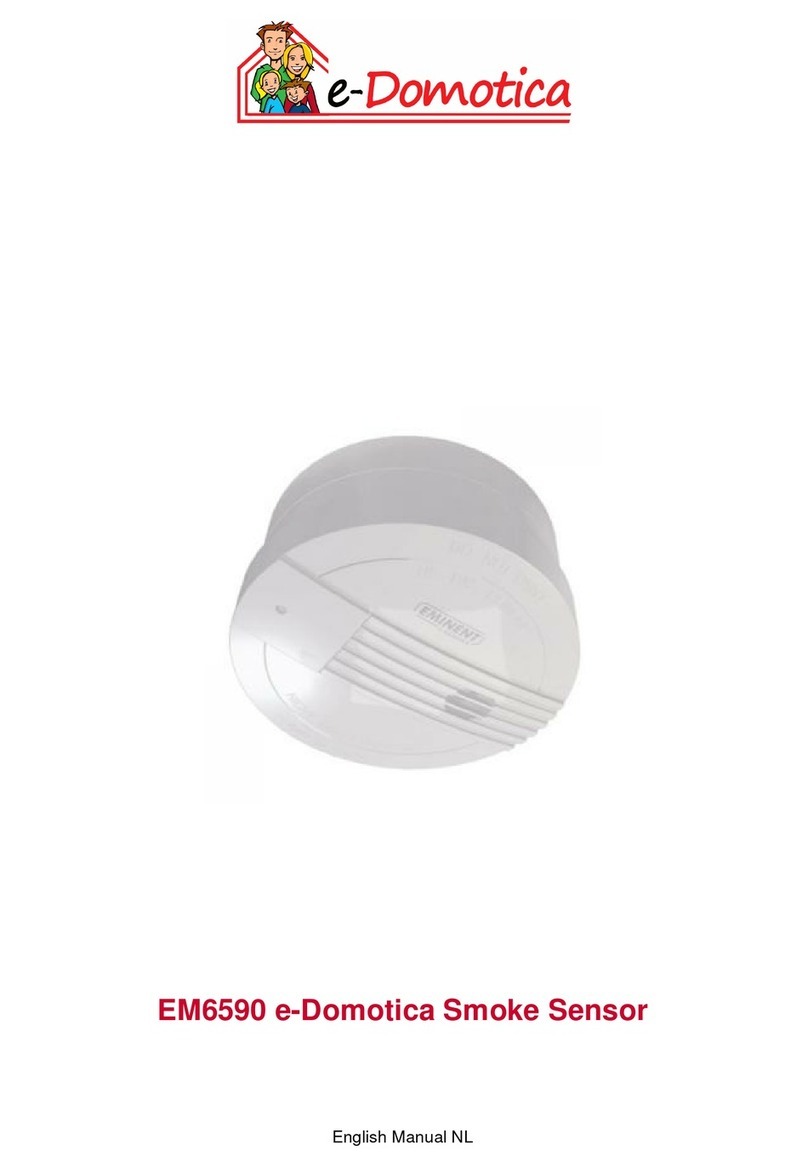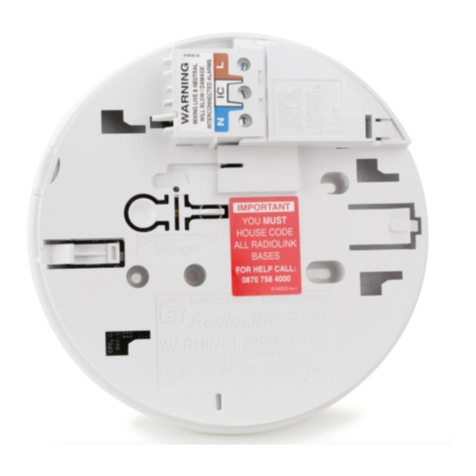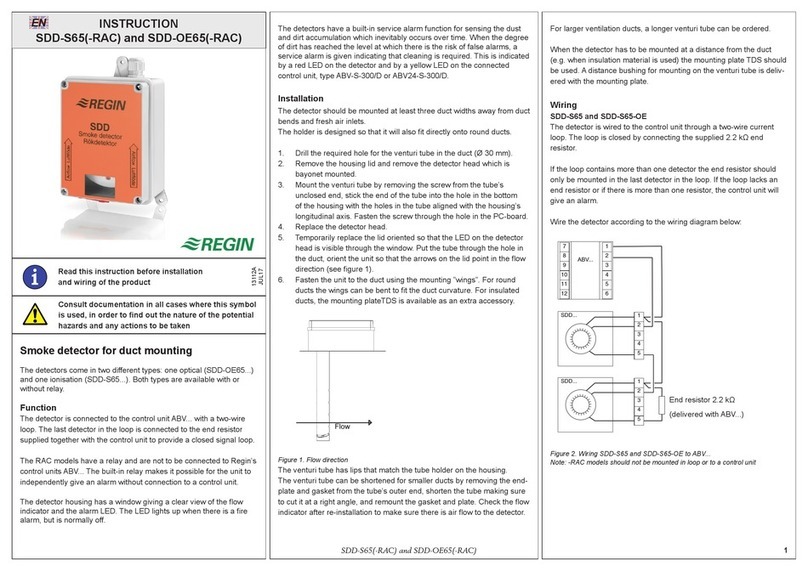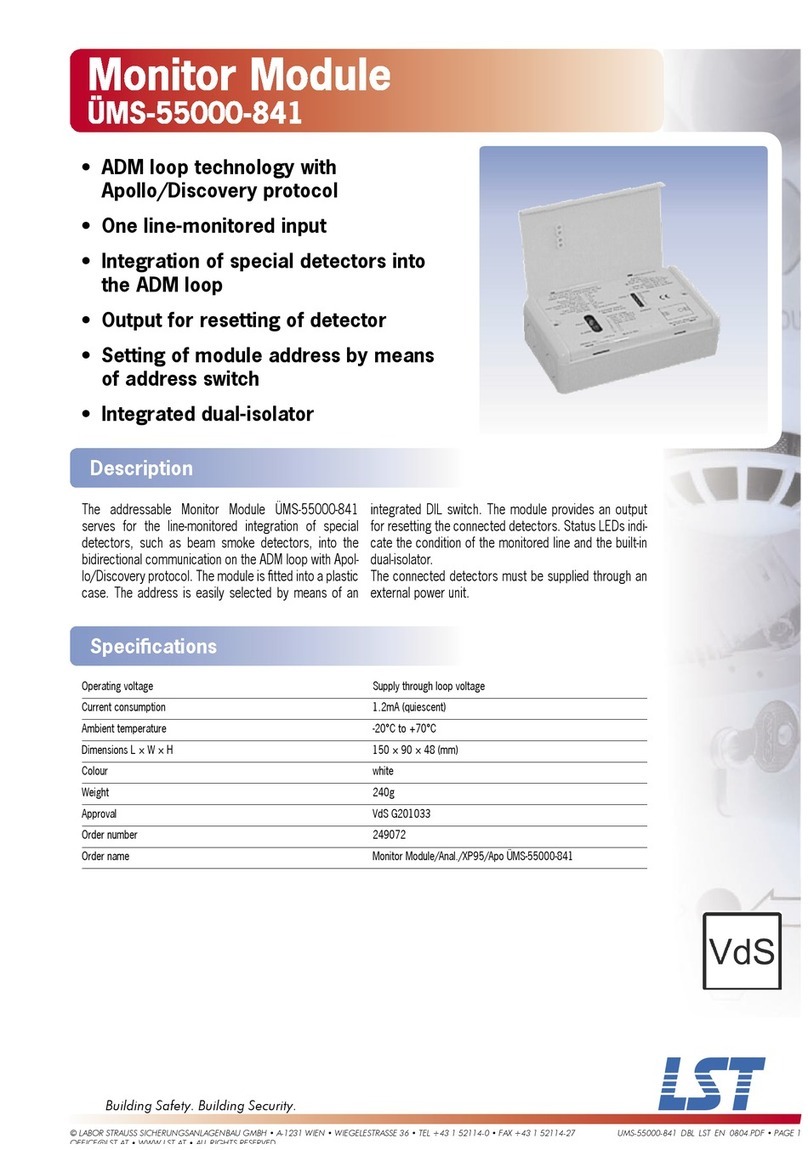NEVER IGNORE THE SOUND OF THE ALARM!
Determining what type of alarm has soun e is easy with
your Ki e Combination Smoke/CO Alarm. The voice
message warning system will inform you of the type of
situation occurring. Refer to the Features section on page 4
for a etaile escription of each alarm pattern.
When the smoke alarm sounds:
Smoke alarms are esigne to minimize false alarms.
Cigarette smoke will not normally set off the alarm, unless
the smoke is blown irectly into the alarm. This unit
contains nuisance alarm protection, which will re uce the
impact of cooking particles. However, large quantities of
combustible particles from spills or grilling coul still cause
the unit to alarm. Careful location of the unit away from
the kitchen area will give the maximum nuisance alarm
protection. Combustion particles from cooking may set off
the alarm if locate too close to the cooking area. Large
quantities of combustible particles are generate from spills
or when broiling. Using the fan on a range hoo which
vents to the outsi e (non- recirculating type) will also help
remove these combustible pro ucts from the kitchen.
If the alarm soun s, check for fires first. If a fire is iscov-
ere follow these steps. Become thoroughly familiar with
these items, an review with all family members!
• Alert small chil ren in the home. Chil ren sleep very
soun ly an may not be awakene by the soun of
the smoke alarms.
• Leave imme iately using one of your planne escape
routes (see page 25). Every secon counts, on’t stop
to get resse or pick up valuables.
• Before opening insi e oors look for smoke seeping in
aroun the e ges, an feel with the back of your han
If the oor is hot use your secon exit. If you feel it’s
safe, open the oor very slowly an be prepare to
close imme iately if smoke an heat rush in.
• If the escape route requires you to go through smoke,
crawl low un er the smoke where the air is clearer.
What o Do When he Alarm Sounds!
